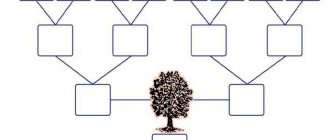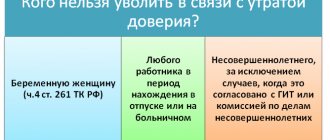What's in the documents?
The degree of kinship is mainly regulated by the Family and Civil Codes. According to the law, proximity is determined by the number of generations between relatives. For example, there is 1 degree of relationship between a mother and a child, and a second degree between a grandmother and granddaughter. This is explained by the fact that in the first version, family members are separated by one birth, and in the second - by two.
Why is it important? For example, because the degree of kinship in the inheritance of movable and immovable property determines the order in which rights are acquired. First of all, these are close relatives. A legal husband or wife has similar rights and obligations. The full list of immediate relatives is indicated in family law, these are: parents, children (including adopted ones), grandparents, grandchildren, brothers and sisters. Moreover, when it comes to the latter, it does not matter how many joint parents they have. In the case of one common parent, they are step-parents. If children have the same mother and father, they are considered half-blooded.
The Family Code describes in detail the degrees of family kinship. They are determined by generations of family members, arranged according to time criteria. So, it can be an ascending line from children to grandparents, descending in the opposite direction, as well as a lateral one.
Culture
In fairy tales, everything ends with a happy wedding, but in life everything just begins with it! Immediately after registering your marriage, you receive a complete set of new relatives along with your chosen one. From this day on, you have two families that have merged into one and entered into complex family relationships. Once upon a time, the question did not even arise about who was being treated by whom, but today, alas, much has been forgotten and we cannot figure out even the closest relatives. Let's go back a couple of centuries ago, when families were large, a patriarchal structure reigned, and even the most distant kinship was held in high esteem.
Blood relatives
With blood relatives, everything is more or less clear: mother, father, brother, sister, uncles and aunts, nephews, grandparents. This is if you don’t go deeper. And if you try to figure it out, you might think that all people in the family are brothers!
- Bratanich - brother's nephew
- Bro - cousin's wife
- Bratanna – brother’s daughter, brother’s niece
- Brother - cousin or distant relative
- Bratova - brother's wife
- Bratych - brother's son, brother's nephew
- Bro, brother - cousin
It's about the same with the sisters:
- Sister, sister, little sister - cousin
- Sister - cousin, daughter of mother's or father's sister
- Sister, sister, sister (ancient Russian) – son of mother’s sister (nephew by sister)
Do you know what to call your grandparents' brothers or sisters? Great Aunt - grandparent's sister (great aunt) and Great Uncle - grandparent's brother. And that’s not all - there are also cousins, second cousins and a whole series of great-great-great... .
Direct relatives
These categories include:
- parents;
- children;
- Grandmothers and grandfathers;
- brothers and sisters, natural and step-brothers.
Simply put, direct lineage is based on the birth of one person from another. In this case, the members of the last group are divided as follows:
- full sisters and brothers (first degree of relationship) with common parents;
- half-uterine, that is, united by blood relationship only through the mother’s side;
- half-blooded means relatives on the father's side.
Regardless of whether both parents are related or only one, children have equal legal rights and obligations in relation to them and other family members.
How significant the concept of direct relatives is is of interest to many people. Let's take a closer look. Based on the legislative framework, a close degree of kinship (kinship ties in the tables are presented in the article) gives citizens many privileges. When determining its degree, citizens often refer to Article 14 of the Family Code, but it only regulates the possibility of marriage between certain categories of people. First of all, these are persons between whom there is a blood relationship.
According to Article 2 of the Family Code, spouses are family members, but not relatives, but in other areas of legal law this concept is interpreted completely differently. So, in housing legislation it is not only husband and wife. This is also father-in-law and mother-in-law or father-in-law and mother-in-law. In the Criminal Code, direct relatives even include cousins. In tax legislation, these include children, parents and spouses. Before giving a definite answer, it is necessary to find out for which area of legal law the degree of relationship is being determined (family connections in the tables can be seen below).
We give a definition
Definition of close relatives under the law: who are they? In everyday life, “relatives” are usually called people united by:
- descent from a common ancestor;
- relations arising from adoption;
- marriage;
- property relations.
Direct relatives
Direct relatives in family law are representatives of different generations of the same family, whose connection can be traced in an ascending/descending line. For example: father - son, great-grandmother - great-grandson. Therefore, the answer to the question whether the grandmother is a close relative is positive in all branches of law.
Lateral line kinship is considered separately. When determining its degree, they use the concept of “knee” - the number of births separating relatives from each other in the family tree.
"Knees" on the side line
We are talking about a triangle, which takes into account the births of both relatives in a direct ascending line of kinship up to their closest common ancestor. Thus, an uncle and a niece are third-degree relatives, since their closest joint ancestor is their father/grandfather, respectively. Is there any point in tracking the degree of relationship with distant relatives?
Often there is. In relation to inheritance, kinship along the lateral line up to the fifth generation is important. It is stipulated that the heirs of the sixth stage are cousins, uncles and aunts.
The fifth degree of relationship is the last one that has legal significance in inheritance. In the absence of sixth-degree successors, persons who are not blood relatives of the testator are called upon to inherit - stepfathers/stepmothers, stepsons/stepdaughters, dependents.
Upon adoption
When determining who is considered next of kin, it is important to remember the norms of the institution of adoption. An officially adopted child is no different in legal status from natural children.
Mutual alimony and other property obligations of the adoptive parent and the child do not cease even after the latter reaches the age of majority. An adopted child joins the adoptive parent's family along with his offspring. Example: the children of an adopted woman are considered the grandchildren of the adopter and the great-grandchildren of the adopter’s parents. The same applies to relatives on the lateral line.
Guardianship and trusteeship
Adoption should not be confused with guardianship/trusteeship, the relationship between stepfather/stepmother and stepson/stepdaughter. The guardian/trustee raises, supports and cares for the child whom he has adopted into the family. However, they are not relatives (close or distant) to each other. Until the stepmother/stepfather has adopted the spouse's children from his second marriage, they are not related to them.
Marriage
Marriage in Russia is recognized as a monogamous union of adults of different sexes, duly registered with the competent authorities (registry office, village council). Actual cohabitation cannot be recognized as marriage even in court, including for the division of jointly acquired assets and inheritance. There is clear judicial practice on this matter.
Registration and divorce entail many different legal consequences. Are husband and wife close relatives or not? There are terminological discussions on this issue, not least due to the difference in wording used in the Family and Criminal Procedure Codes of the Russian Federation.
Obviously, they should not be relatives, that is, persons close genetically (by blood). Although, here too everything is ambiguous. The direct prohibition of marriage applies to all relatives in the direct line and the closest relatives in the lateral line. Family union of cousins, uncles/aunts with nephews and other persons is legally possible, although it is condemned by society.
Important: the spouse is clearly a family member. All benefits granted to immediate relatives also apply to spouses.
The key feature of a relationship based on marriage is its time-based and conscientious nature. People are born blood-related from the very beginning. People enter into marriage after reaching adulthood, solely of their own free will. The marriage bond may be terminated. A person whose marriage is dissolved ceases to be the legal heir of his spouse. However, he may qualify for alimony from his former spouse due to his disability.
Relationships of varying degrees of closeness arise between blood relatives of each spouse after they are married.
A person's in-laws include, for example, father-in-law/father-in-law, mother-in-law/mother-in-law, matchmaker, sister-in-law, brother-in-law. The circle of close relatives determined by federal law does not include in-laws. In civil and family legislation, in-laws are not mentioned at all. In the criminal document they are referred to as “close persons”
The meaning a person puts into the concept of “relatives” depends on his religion. According to the canons of Christianity, close relatives are godmother/father, godchildren, and godfathers.
Muslims equate dairy relationships with blood relationships. Men who are breastfed by the same woman are considered brothers. If a woman breastfeeds someone else's child, he cannot marry her blood offspring.
Relationship from a legal point of view
Legislation defines special family ties in the legal system and establishes a number of restrictions or relaxations. Each code characterizes the degree of kinship in a family in its own way. In practice it looks like this. If the IC calls one group of people relatives and, by its definition, shares the degree of kinship, then for the IC this is a completely different category of persons.
In legal institutions, this term often appears in civil, criminal, family and tax codes. However, the law does not provide for an unambiguous list of close and distant relatives.
In each individual case, kinship, from a legal point of view, has its own specific meaning. For example, when inheriting property, mandatory applicants are taken into account first, and when dividing property between spouses, minor children are also considered. In criminal law, close relatives have the right to refuse to testify against each other.
Legal status of spouses
One of the most interesting questions is the status of spouses in relation to each other. It seems that two people live together under one roof, do various things, raise common children, it would seem that nothing else could be closer to their connection, but they cannot be called relatives, since between them there is no single person from whom they descended. light. What does the law “say” in such an unusual case?
Is the wife related to her husband?
Several codes provide different information regarding the relationship between spouses:
- In the criminal code, spouse and husband are not close relatives, they represent a separate type of relationship.
- In the tax code, they are closely related to each other.
- In the housing code they are completely one whole.
According to the law, if two people enter into an official relationship (marriage), then they become one unit of society bearing the same surname. Accordingly, they are new acquired relatives in relation to each other.
The degree of relationship between them is impossible to determine. If you pay attention to this fact from the inheritance side, then one of the spouses after the death of the second is its full owner. The exception is a civil relationship between two partners, which is not legally binding.
Good to know! A person cannot be alone. Everyone has a huge number of a wide variety of relatives: close and distant, living and deceased, blood and acquired. It doesn't matter what the law says about this. What matters much more is the sincere attitude of one person towards another, the manifestation of his care, attention and respect. Only in this case can people be called relatives.
Husband and wife in tax law
The Family Code and the Tax Code do not classify spouses as close relatives, which is quite logical, since they are not related by blood, which is the main criterion for establishing the degree of relationship in marriage. Therefore, husband and wife are related persons and members of the family, just like children and parents. Consequently, when concluding transactions, they bear similar rights and obligations that are vested in close relatives.
One more nuance that needs to be taken into account. The Tax Code does not recognize relationships as family relationships, despite people living together and running a common household who have not officially registered their relationship. They are also not considered family members.
If we talk about former spouses who have filed an official divorce, the situation is considered on a case-by-case basis. For example, if a husband gives his wife an expensive gift and they divorce that same year, the ex-spouse does not have to pay tax. In turn, the woman must provide evidence that she was legally married when receiving the gift. If the gift was given after the divorce, it is taxed like any other gift given by a stranger.
Other names for relatives among Russians
Nephew - relative, relative, fellow countryman.
A great-great-niece is the great-granddaughter of a brother or sister.
A great-great-nephew is the great-grandson of a brother or sister.
Matchmaker (m.), matchmaker (f.) - the parent of one of the spouses in relation to the parents of the other spouse.
Brother-in-law is the husband of a sister-in-law (wife's sister).
Brothers-in- law are persons married to two sisters.
Sister-in-law is the wife's sister.
Sister, sister, sister, sister - cousin (if married, then sister).
Close relatives in NK
This term in tax legislation is considered from the point of view of various transactions, exemption from payment of tax duties and fees. Article 217 of the Tax Code states that any gifts received from close relatives are not taxed. They are also not indicated in the income tax return.
When donating real estate by close relatives, both parties are exempt from paying a one-time tax. This is justified because the giver does not receive a benefit, just as the recipient does not pay a fee for the gift. Moreover, if a real estate purchase and sale transaction is concluded between close relatives, the buyer can receive a tax deduction for the property. The seller, in turn, must submit a personal income tax return to the tax authorities.
Spouses who are not considered close relatives are treated as such in cases of giving expensive gifts to each other.
Blood relations
This concept interests many people in the process of certain life situations. The closest blood relatives are the parents and the children born from them. A common mother and father determine the degree of relationship (kinship ties in the tables can be seen in the article) between brothers and sisters. They are not only considered the closest, but also have equal rights and responsibilities in relation to their parents, have similar character traits, and sometimes even appearance.
Consanguinity can be lateral, in an ascending or descending line. But there is one caveat. The determining factor here is the presence of a common family member from whom people whose relationship is considered blood descended. This needs to be taken into account.
In-law relationships
In legislation, in addition to blood relationship, there is another type of relationship. This is our own relationship. They are the only type of kinship that is based not on blood ties, but on the fact of marriage. Let us explain in more detail.
People who officially register a relationship become close relatives. The following situation arises. Family members on both sides can be called distant relatives based on their relationship. The basis for this in a particular case is a marriage certificate. In this case, obligations towards each other are borne exclusively by spouses.
Simply put, a husband legally does not have to take care of his mother-in-law, just as a wife does not have to take care of her mother-in-law. In the event of a divorce, the spouses lose their relationship. The only obligations that unite former spouses relate to the upbringing and financial support of children, if any.
The concept of family ties and their legal consequences
Kinship is a special relationship between people who have the same roots. Individuals in such connections are considered relatives, maintain close friendships and communicate frequently. There are also family ties. They show who this or that relative is to a person.
Varieties of related lines
The following types of kinship are distinguished: cognates and agnates. Cognates are blood relatives, the so-called real ancestors or future successors of the dynasty.
- Agnates are family members who entered it as a result of a new marriage or adoption procedure.
The existing concept of kinship has a connection with family relationships and dates back to ancient times. The vast majority of names appeared in Ancient Rome. It was believed that a family had only one head: the father. All power belonged to him. In southern countries the situation has not changed to this day.
Lines of consanguinity
Consanguinity lines are divided into direct and lateral. Representatives of straight lines are persons descended sequentially from one another.
The resulting straight line underlies the creation of the term “direct relatives” and allows us to identify the closest ones.
The closest relatives are twins. They are identical and fraternal. In the first group, children are born that are similar to each other, difficult to distinguish even by their clothes.
An example of close ties is exclusively direct kinship. According to the law of the Russian Federation, marriage between close relatives is prohibited. This is associated with a high risk of having a defective child and a violation of ethical standards. It is believed that entering into such a marriage spoils the genetic code.
Collateral kinship includes people descended from the same ancestor: two brothers or two sisters, half-children (individuals born of the same father). Representatives of the species are also relatives distant from each other by several generations: half-relatives, first cousins, second cousins, etc.
How to write a questionnaire about the degree of relationship?
When getting a job, applying for a loan, joining the service and in a number of other cases, people fill out forms indicating family members, and they may also need the degree of relationship (family ties are presented in the tables in the article). To write correctly you need:
- Determine the closeness of relationship.
- Indicate the status of the relative, for example, ex-wife, widower, etc.
- Indicate personal data, namely surname and initials, place of residence, position, etc. upon request.
An official form of relationship is required: mother, father, cousin, etc. All data must be current at the time of submitting the application. If they have changed, for example, the last name, then it is advisable to note this. All dates, places of birth and residence are indicated based on passport data. If the person filling out the form does not have information about a relative, the following wording must be written: “I have no information about such and such.”
Do not be negligent in filling out the column about immediate relatives. As a rule, it is checked with special care by higher authorities and the management of the organization and may affect the decision-making process regarding the person submitting the questionnaire.
Property
Property is the relationship of the relatives of one spouse to the other and his relatives. Special terms are used to denote such relationships.
Spouses
- Spouses are married persons. Husband (spouse) is a man in relation to the woman married to him.
- Wife (spouse) is a woman in relation to the man married to her.
Parents of spouses
- Father-in-law is the father of the husband.
- in -law is the husband's mother.
- Father-in-law is the wife's father.
- Mother-in-law is the mother of the wife.
- Matchmaker is the father of one of the spouses in relation to the parents of the other spouse.
- Matchmaker is the mother of one of the spouses in relation to the parents of the other spouse.
Brothers and sisters of spouses
- Brother-in-law is the husband's brother.
- Sister-in-law is the husband's sister.
- -in-law - wife's brother.
- Sister-in-law - wife's sister
Spouse of a close relative
- Son-in-law is the husband of a daughter, sister. In other words, a son-in-law is a man in relation to his wife’s family: her parents (father-in-law and mother-in-law), her sisters (sisters-in-law), her brothers (brothers-in-law) and the latter’s wives, as well as the wife’s grandparents.
- A daughter-in-law is a son's wife in relation to his parents.
- Daughter-in-law is the wife of a son, brother, grandson, brother-in-law. In other words, a daughter-in-law is a woman in relation to her husband’s family: his father (father-in-law), mother (mother-in-law), brothers (brothers-in-law) and sisters (sisters-in-law), brothers’ wives (mother-in-law, consorts) and husbands of sisters and sisters-in-law (sons-in-law), to grandfathers and my husband's grandmothers.
- Brother-in-law is the husband of his wife's sister. In other words, brothers-in-law are men whose wives are sisters.
- Cousin-in-law is the wife of a cousin (a husband's cousin is a cousin-in-law for a wife).
Daughter-in-law and daughter-in-law. What are the differences? Some historical and philological sources suggest that the concept of “daughter-in-law” comes from the words “unknown”, “who knows who”. This is what they say about an unfamiliar girl whom her son has just brought into the house. There is still no clear opinion on where the word “daughter-in-law” came from. There are various options: a) initially the daughter-in-law was called “son” - a derivative of “son”; b) “daughter-in-law” comes from the Indo-European concept “sneu”, which is translated as “to bind”; c) some philologists believe that “daughter-in-law” was formed from the expression “in pregnancy,” which means she is about to give birth. In most cases, it is believed that for the husband’s parents, a girl can be both a daughter-in-law and a daughter-in-law. She is the daughter-in-law of the rest of her husband's close relatives (brothers, sisters, his brothers' wives, etc.). There is also a point of view that a woman becomes a daughter-in-law in relation to her husband’s mother, and a daughter-in-law in relation to his father. Another version from historians and linguists is inclined to believe that the son’s wife was called a daughter-in-law until the birth of the young couple’s first child. After the birth of a child, the daughter-in-law became the daughter-in-law.







